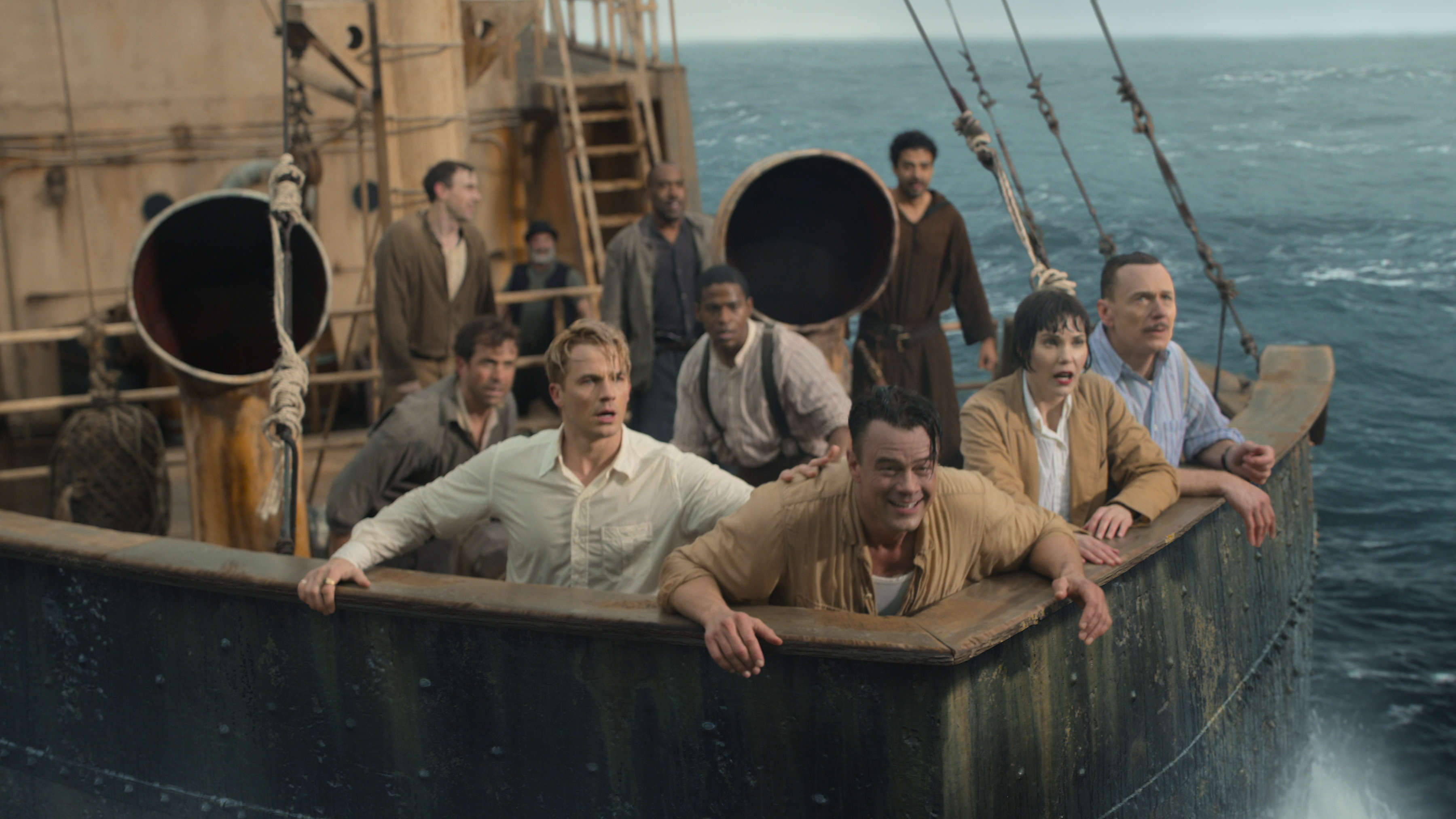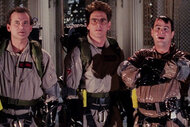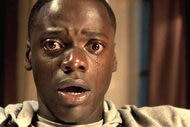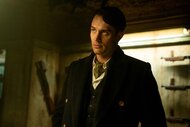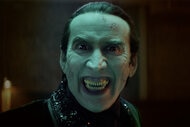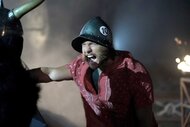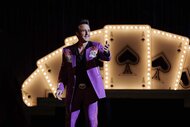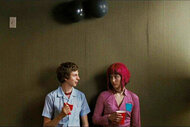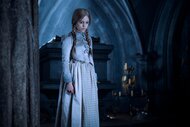Create a free profile to get unlimited access to exclusive videos, sweepstakes, and more!
Netflix's Jupiter's Legacy showrunner and cast reveal new depth to the origins of comic's characters
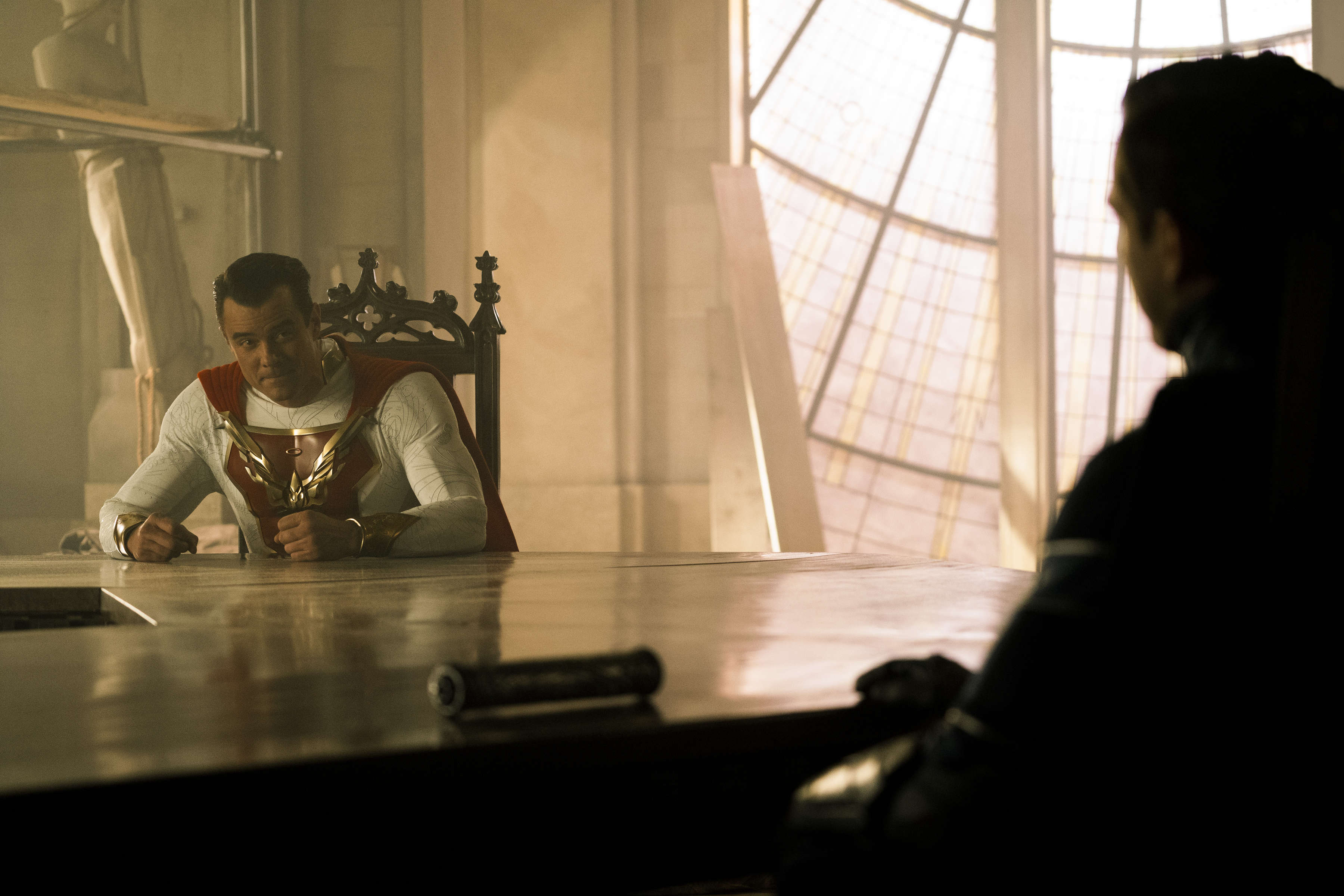
There’s no shortage of capes and costumes on the Toronto set of Jupiter’s Legacy.
Based on the 2013 Jupiter’s Legacy comic book by writer Mark Millar and artist Frank Quitely, the Netflix TV series of the same name (out on May 7) chronicles a multi-generational superhero saga. The show kicks off in the late 1920s when Sheldon Sampson (Josh Duhamel) and five friends somehow acquire extraordinary powers on a mysterious island. They ultimately band together to form their own league of champions, the Union of Justice. The six original members include team leader Sheldon/Utopian, his future wife Grace/Lady Liberty (Leslie Bibb), his brother Walter/Brainwave (Ben Daniels), his best friend George/Skyfox (Matt Lanter), Richard/Blue Bolt (David Julian Hirsh) and Fitz/The Flare (Mike Wade).
“Any family who watches this together will recognize people that they can really latch on to and relate to,” showrunner Sang Kyu Kim, who took over after Steven DeKnight departed due to creative differences, tells SYFY WIRE during our 2019 set visit. “For me, I worked on The Walking Dead during its prime. One of the similarities I noticed with that show, that made it a success, and this is that we have a broad range of characters. Everyone is going to find someone they are going to really love and someone they are going to love to hate. That’s really important, that the audience latches on to a group of characters and we definitely have that.”
The breakdown for the sequence SYFY WIRE is on hand to watch goes something like this: A local soundstage has been transformed into the Union of Justice’s headquarters, the Chamber of Secrets, complete with a massive circular conference table and chairs. It’s the 1930s and this gathering marks the first time all the heroes have suited up in costume at the same time. Sitting around the table, the group banters, ribbing Richard about the size of his “rod.” The conversation soon turns towards their powers, responsibilities, and method of conduct.
As time moves on in the show, though, some of the do-gooders became disenchanted with Sheldon’s rigid, albeit outdated, code of ethics. And, nearly a century later, Sheldon and Grace’s two grown-up children, Brandon (Andrew Horton) and Chloe (Elena Kampouris), have been buckling under the pressure of living in their parents’ shadows and possibly taking up their mantle. It’s all a lot to deal with… which makes for compelling drama.
“All the characters are serviced fairly enough that we get to know them and have good arcs for all of them,” Kim explains. “Because of that, we have different points of view. They are very articulate in how they present that view to the point where you may not agree, but you empathize and understand where they are coming from. And with the ones you do agree with, you can absolutely see the other side to it. What we wanted to do was not pick sides, present the characters for who they are and what they believe in, but also give them strong arguments as to why they believe it. They are not just spouting out, ‘This is what I want.’”
One individual who splinters from the team is George. A playboy millionaire and a bit of an eccentric, George’s shift in ideals, not to mention a fallout with Sheldon and some romantic heartbreak, leads him to cut ties with the Union. He eventually resurfaces as a prominent supervillain, intent on exacting his revenge on those that betrayed him.
Decked out in his colorful Skyfox spandex threads, minus the cape, Lanter pulls up a chair to talk
“On paper, it feels like George experiences one of the most dynamic changes,” Lanter reports. “He goes from being big, grand and maybe you could even say he’s carefree, not underneath, but on the top he’s carefree. When we see George in the present day, he’s a totally different character. I think he’s really hardened. A lot has happened in his life, especially when he gets ousted from the Union of Justice. I think he’s going to be a different George.”
Lanter notes that the key to finding George’s voice was tempering that grandness and grounding the character. Indeed, in his audition tape to former showrunner DeKnight, the Timeless actor reveals he went “pretty big.”
“Sometimes as an actor, you kind of question, ‘Is this too much?’” Lanter says. “But when I got the scenes, I really felt like George was a combination of Robert Downey Jr. and Paul Newman. I love Paul Newman. I feel like he always has a secret. If you see his face, he always a smirk on. I took that thing into George. I put it on tape and then I went and saw Steven DeKnight. We talked about it and I said, ‘I was kind of big in the audition. Are we wanting that?’ He was like, ‘Yeah, yeah. That’s what we want.’ But certainly, when we were filming those first few episodes, we were working the character and finding the balance between that.”
As with any adaptation, the source material underwent some tweaks. Most notably, the comic book version of The Flare is white, while the TV series cast Wade, who is Black. The move adds another layer of relevance to the storytelling and as Wade reports, “more elements that you can play with.”
“Not to get into too much, but I see this show as a commentary on superhero culture,” says Wade during a break. “I even see it as a commentary on celebrity. It’s a superhero show, but it’s also a family show. There’s really something for everyone to relate to because not everybody is into comic book characters. It’s universal in that everybody can dig what’s going on, you can relate to something that’s going on with the show.”
“We had the benefit of having a very diverse writers’ room, the most diverse I’ve been a part of. Majority female,” adds Kim. “Having worked in TV for 11 years, I’ve never been in a room that diverse. I would say it was arguably the best room I’ve been part of. It was not just the talent level they brought, but just the different points of view.
“The character Fitz, that was something we all discussed and that we discussed with Netflix, as well,” he continues. “They were very open to it. You are sending a message that these people were chosen. We thought it was important to have a bit more range in terms of representation.”
The comic book tackles some fairly heavy subject matter. A closeted homosexual who patronizes male prostitutes, Richard is blackmailed by FBI Director J. Edgar Hoover about his sexual activities. As a result, Richard attempts suicide. (Whether the series will go down that path remains to be seen.)
“That’s what is so exciting as an actor, to be able to do that stuff, because it’s not your usual double identity,” says Hirsh. “It’s almost a triple identity. Even his own superhero friends don’t know what’s going on in his life. I can’t give away too much, but we are going to delve into those elements of the character. There’s some heart-wrenching stuff. Obviously, we see Richard Conrad/Blue Bolt in the past, in the 1930s. But we will find out more about where he is, what happened to him and what’s going on, in the future.”
Jupiter’s Legacy fleshes out the initial expedition on the island, stretching it into a whole season. The trip transpired over a few pages in the comics, but the freshman year basically serves as an origin story. That means the writers and producers gambled that the show would be renewed in order to explore some of the meatier arcs.
“Obviously, we have the comic books there, but this is really our adaptation of that foundation,” Kim concludes. “We had a lot of freedom and support from Netflix, to really take an adaptation to the comics and create the best possible show. Obviously, we were influenced by it, but we also brought a lot to it, as well. You have to for multi-seasons, hopefully. Even within a season, you have to generate a lot of unique storylines. But the comic was an amazing foundation to work off as an adaptation.”
All episodes of Jupiter's Legacy Season 1 premiere on Netflix on May 7.
